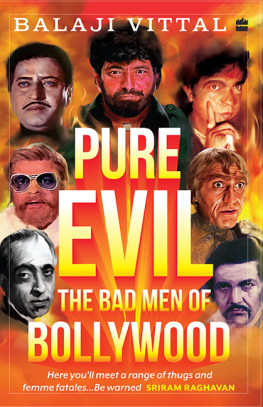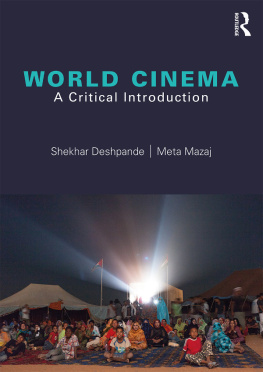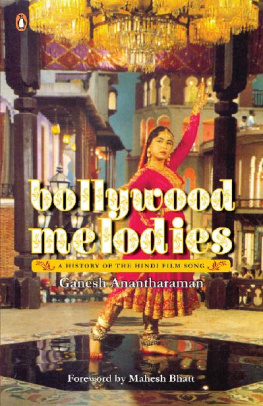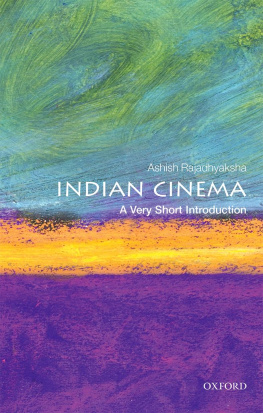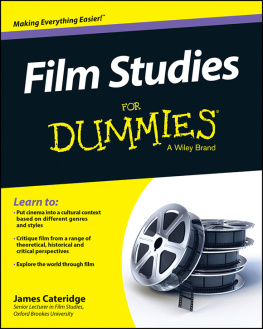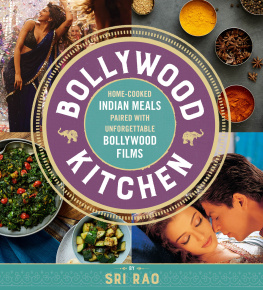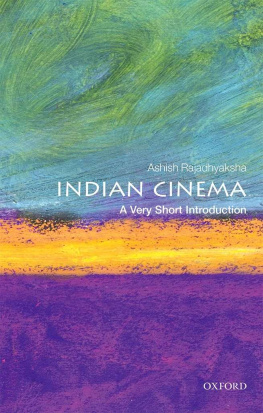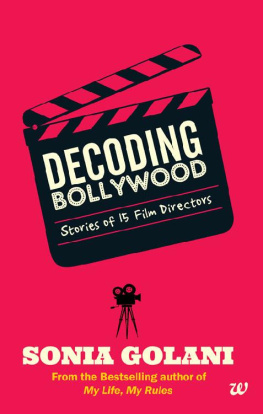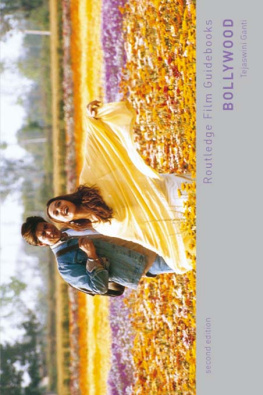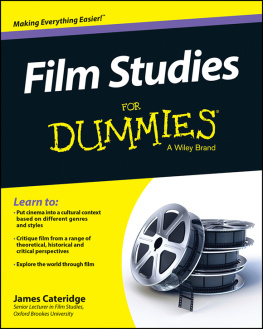I have often been asked to put an exact date to the beginning of my brush with the Bollywood film, or cinema per se. Well, it could have been around any of the following adventures or even a forgotten one. It could have started in the weekend ritual of watching Hindi/Bollywood blockbusters every Friday evening and Hollywood films on Saturday evenings at the Audio-Visual Hall of the Regional Engineering College in Rourkela during my childhood in the 1980s.
It may have been during one of those heated fan debates on winner lists of the annual Filmfare and Indian National Film Awards, the eagerness to savour the latest breaking gossips in Stardust and Cine Blitz, that dedicated tuning to Ameen Sayanis Binaca Geetmala (a weekly broadcast countdown of popular Bollywood songs), and the still-retained nostalgia for Indias national television broadcaster Doordarshans film-themed shows like Chitrahaar, Rangoli, Showtheme, and the Sunday afternoon telecasts of award-winning art-house films from Indias multiple regional-language cinemas.
The magic of experiencing a Bollywood film was in watching Dilwale Dulhaniya Le Jayenge from the front stall of Calcuttas Metro Theatre (now Kolkata), recurrently bathed under a shower of coins at every song appearance of its heartthrob lead pair of Kajol and Shah Rukh Khan; savoring superstar Salman Khans Dabangg with a houseful of kids at Mumbais iconic peoples theatrethe G-Complex; surreptitiously jumping the boys hostel boundary wall on Friday nights to discover the guilty pleasures of an adult film in Dhenkanal; or curating a Classic Bollywood season, the first-ever at Edinburghs landmark theatre space, the Filmhouse. It was in the bargaining for tickets in Black for sold-out blockbusters most often, until the late 1990s; queuing for hours before a betel-stained ticket window for a viewing of the anti-hero cult movie Baazigar, or for another serving of Madhuri Dixits riotous chartbusting dance number, Choli ke peeche from Khal Nayak, and then leaving the theatre en masse with half the audience, at intermission. It was a realization made firsthand about the timeless standalone attraction of a good song moment beyond the time-bound pleasures of its hit parent film.
Bollywood became a much-loved calling for me through my every working day at Bombays (now Mumbai) iconic Stardust magazine, first as the features editor and then as one of its youngest editors. It evolved into a mature affair, while pursuing my MSc in film studies at the University of Edinburgh, to eventually become a passionate interest subject as my doctorates research questthe exploration of ancient aesthetic theories to source new theoretical frameworks for a fairer appreciation of melodrama on film.
Bollywood, to me, is Gulzars Ijaazat, Sanjay Leela Bhansalis Devdas, Anurag Basus Barfi, Mehboob Khans Mother India, Guru Dutts Pyaasa; all the characters and their familiar lines in Sholay and Bahubali; the vocal intensity and the sheer screen presence of that veritable textbook on acting, Dilip Kumar; auteur Raj Kapoors timeless, humanist comedies; the haunting innocence in the eyes of Jugal Hansraj in Masoom; the mayhem in the Mahabharat moment of Jaane Bhi Do Yaaro; the rebellious climax of Mirch Masala; the introduction scene of Hindi cinemas most-loved villain character, Gabbar Singh; Amitabh Bachchan in Silsila, Black, and Nishabd; and Sanjeev Kumars every appearance on celluloidalways!
It is in the beholding of every song moment in Naushad and K. Asifs Mughal-e-Azam; the joyful ecstasy, grace, and beauty in the classical dance competition ushering in the drama of the costume-epic Amrapali; the Vyjayanthimala-Shammi Kapoor-Helenperformed East-West fusion song competition Muqabla humse na karo (Dont challenge us) in Prince; Waheeda Rehmans enactment of onscreen freedom in Aaj phir jeene ki (I want to live again) in Guide; music composer R. D. Burmans uncommon experiments at creating new sounds from unexpected instruments; an aging Naseeruddin Shahs youthful awakening to love through the Dil to baccha hai ji (The heart is but a kid!) song in Ishqiya; a broken-hearted Shabana Azmi holding back tears to heartbreaking impact in the Tum itna jo muskura rahe ho (What tears your smiles hide) moment in Mahesh Bhatts Arth; V. K. Krishnamurthys visual ode to loneliness under a ray of revealing light in Waqt ne kiya kya haseen sitam (Oh, what a beautiful tragedy time has wrought) in Guru Dutts Kaagaz Ke Phool; A. R. Rehmans Piya Haji Ali (Fiza) qawwali, or the simply divine Kun fayaa kun (Rockstar) rendition; the essence of Mera Naam Jokers Jeena yahan marna yahan (Living here, dying here) song; or the choreography of Pehla nasha pehla khumar (First love, first infatuation) from Jo Jeeta Wohi Sikandar.
Bollywood, to me, is the lively beauty and uplifting presence of Madhubala that added color to the black-and-white films; the mere recall of that halo-constructing introduction shot, languorously panning upwards to reveal a poignantly gorgeous Meena Kumari, as Choti bahu, in Sahib Bibi Aur Ghulam; and studying before a life-sized poster on my study rooms wall to one of those qaatiladaas (heart-stopping gestures) from Umrao Jaan featuring Rekha, a diva whose life is Bollywoods echoes Norma Desmonds statement from Sunset Boulevard: Im still big. Its the pictures that got small.
The memories and inspirations, the joys and triggers, leading to the Bollywood FAQ book are many, but they might not have come together as a writing project if not for the proverbial offer I couldnt refuse by my agent, Robert Lecker, of the Robert Lecker Agency, and his diligent persuasion since, from beyond seven seas.
Thanks to Marybeth Keating, of Hal Leonard Publishing, and Carol Flannery, of Rowman & Littlefield, for their patience and guidance through the editing and submission process respectively. And to my star copy editor, Lon Davis: Your elaborate, explanatory edits and conversational observations were an empathetic education in cross-cultural tropes, thought transitions, and translations. Lon, your letter of appreciation at the end of the editing process, arguably the books first review, is one to cherish forever.
Thanks are due to my fellow film enthusiasts: Prof. Arnab Bhattacharjee, Elena, Amit Vats, Subhranil Bhadra, Sudhanshu Sharma-Ji, Roshini, and Vikas Dubey from my days in the Burgh (Edinburgh); friends and journalists Rajiv Vijayakar, Sonali Chakraborty, Rajesh Naidu, and Ramkamal Mukherjee in Bollywoods capital city of Mumbai; and Shubhangi Rastogi Dave, a fan of everything non-Bollywood, for our many argumentative conversations on perceptions about good cinemacheers and disagreements that have consciously and subconsciously lent themselves to enriching the reviews and observations in the book.
Abha Sharma Rodrigues, Nandini Sen (Di), and Gaurav Chaudhary, for your infectiously inspiring love for the Masala Film and being my most adorable, enjoyable, and stimulating companions for film viewing.
Shaikh Ayaz, for your unwavering friendship and for never turning me downeither at short or long noticewhen it came to providing invaluable critiques and for proofreading my ideas. Jubin Mishra, for your amazing appetite for Bollywood binge watching, your eye for detail, and enthusiastic reviewing of the books longest chapters (The Lists). And my first film-buddy from school years, Susim Mohanty, for also being my first critic, ideator, reader, and one-stop search engine for everything on classic Hindi films and its music, long before Google happened.


